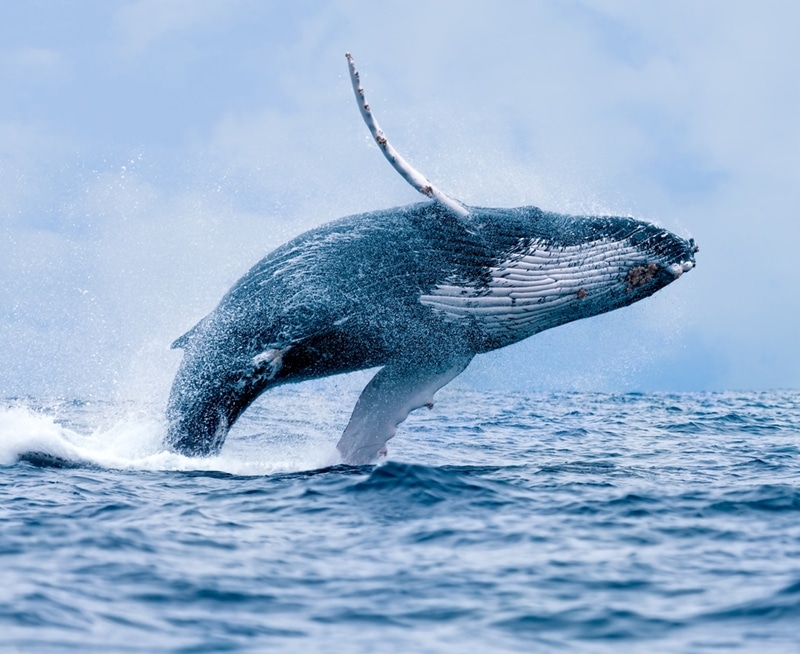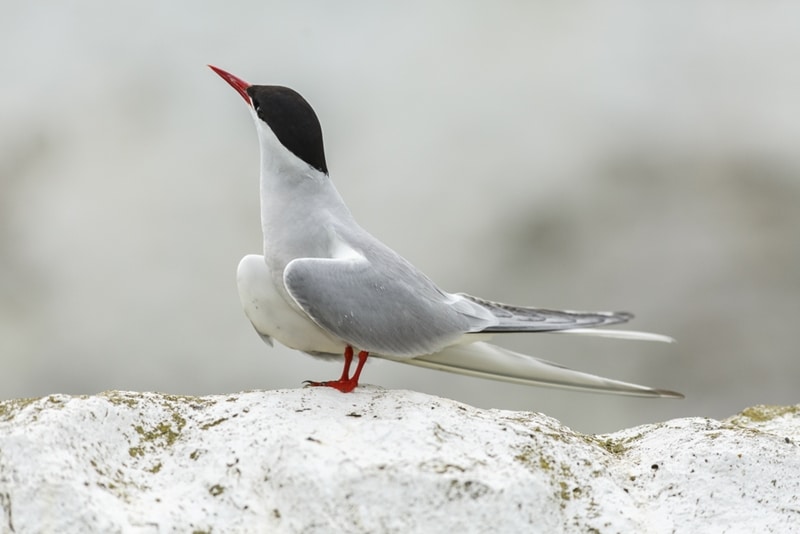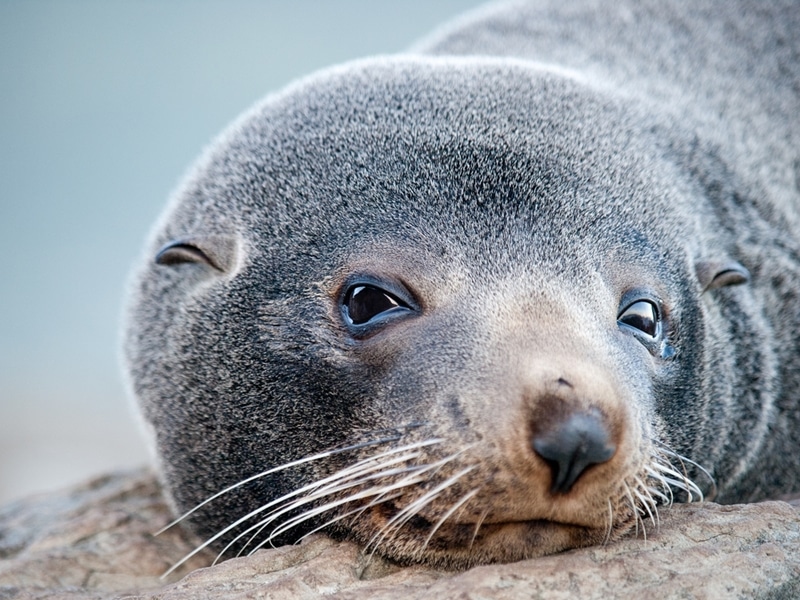Despite everything that we know about the animal world, there are certainly plenty of secrets that continue to astound us. Take the phenomenon of migration, for example.
While we know the reasons why animals migrate, there is still much to learn about how they know when and where to migrate to. Nonetheless, the notion of migration creates some of the best wildlife sights in the world – often including thousands of individuals travelling in unison.
On board with Aurora Expeditions, we’re lucky to see a few different animals during their migration phase. Here are the key details of where they are heading and why!
Humpback whales
Read more: Spring – What’s happening in Antarctica & South Georgia?
When we’re cruising the waters of the Arctic or Antarctica, you might be lucky to spot a humpback whale breaching. It might cause a wave or two, but don’t worry, the Polar Pioneer is more than robust to ride it out!
Humpback whales are common around the world, but will migrate towards the poles during the summer months (exactly when we travel). At this time, fish, squid and krill numbers are at their highest, allowing these giants of the ocean to feed well. Like most whales, humpbacks don’t have teeth so are limited to small aquatic animals that frequent the cold water of the poles.
The aim for humpbacks during the plentiful summer months is to build up blubber for the mating season. As the temperature begins to fall and the ice caps start to form, the humpbacks will migrate south – on the hunt for ideal breeding spots and warmer water. This is commonly around Australia and New Zealand for humpback whales in the southern hemisphere and Hawaii and the Gulf of Maine for those from the north.
Interestingly, humpback whales have one of the longest migratory journeys of any mammal – averaging around 5,000km a season.
During the winter months, humpback whales will mate and bear offspring before making the same journey back the poles to continue this ongoing migratory cycle.
Arctic/Antarctic terns
Read more: Spitsbergen to spot on your Arctic expedition
Do you wish that you had summer all-year round? If so, Arctic terns just might be your spirit animal.
Averaging a weight of only 110g and 34cm length, these small birds certainly make use of the wings – constantly flying between the Arctic and Antarctic regions to always enjoy the plentiful summer months. Arctic terns can live up to 30 years so experts have estimated that over a lifetime, an individual can fly an amazing 2.4 million kilometres.
Unlike humpback whales that usually don’t feed during migration, Arctic terns must eat during the journey to maintain their energy. As such, the birds dive into the water to catch fish and other food during the minimum 19,000km trip.
When the Arctic terns arrive in Antarctica for the summer, they can be found feeding and nesting near the edge of the pack ice. This gives them the best opportunity to hunt small fish and get ready for their next long journey north.
If you’re wanting get a photo of an Arctic tern, be on the lookout for their distinct white rump, light grey feathers, red/black legs and forked tail. As one of the only animals that you’re likely to see both in the European Arctic and Antarctica, Arctic terns are well worth seeing!
Antarctic fur seal
Read more: Exploring the sub-Antarctic islands
While Antarctic fur seal don’t travel as far as humpback whales and Arctic/Antarctic terns, their migration is still an important part of its species survival.
During the dark winter months, fur seals spend most of their time at sea near the Antarctic ice to avoid predators. As the water begins to warm and sun starts to shine, the population will head north of the continent to breed and feed.
The most common destination for fur seals is South Georgia – between Antarctica and South America. If you’re lucky enough to undertake an expedition in this region, you could be faced with the densest concentration of marine mammals on Earth. According to the experts, around 95 per cent of breeding fur seals will head to South Georgia – making for some busy beach real estate.
Of course, as the population is so large, fur seals can also be found on other subantarctic islands including South Orkneys and South Sandwiches and the Shetlands.
For fur seals, this migration is mostly for breeding purposes, but during the warmer months, South Georgian waters are abundant with squid, krill and king penguins – all important parts of their diet. As such, when they return to the continent during the winter, the seal population can survive.
Learning more about migration
It’s all well and good to read about migrating wildlife, but how about seeing it in real life? With the help of Aurora Expeditions and our on board naturalists, you can see migration happen in front of you and discuss this behaviour with our experts.
If you would like more information about our various adventures, get in touch with our team today – we look forward to speaking with you!




